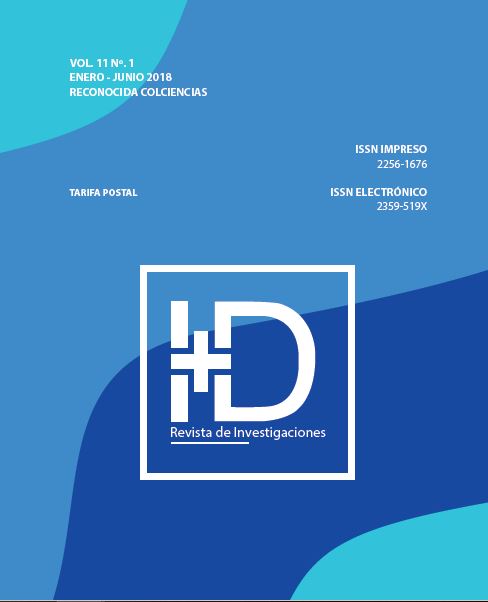Medical device reprocessing standardization oriented to safety in health and environment
DOI:
https://doi.org/10.33304/revinv.v11n1-2018010Keywords:
Standarization, Metrology, Environmental Quality, Human security, Waste disposalAbstract
The reprocessing of medical devices is a practice that, over the years, has become well accepted in the area of health care. However, to carry out this process focusing on the safety of the patient and the environment, it is necessary to have standardized practices. The goal of this paper is to propose a standardization protocol for the use and reprocessing of medical devices, that considers all the life cycle stages in which the entity in charge of using the medical device is involved in, that is, from the acquisition to the final disposal of the device, in order to have an adequate traceability of the process. This protocol was constructed with a qualitative approach and validated through an emulation applied in a Metrosalud medical center, in Medellín. A properly structured protocol for the use and reprocessing of medical devices improves patient care and protects the environment by reducing hospital waste and the associated economic costs.Downloads
References
Alfonso Marín, L. P., Salazar López, C., & Franco Herrera, A. L. (2010). Incidencia de eventos adversos asociados a dispositivos médicos en una institución de salud en Colombia. Revista Ingeniería Biomédica, 4(8), 71–84.
Arévalo, L. C., & Carrillo-Martínez, C. M. (2007). Reuse and Recycling Practices in a Colombian Hospital. AORN Journal, 86(5), 791–797.
Así Vamos en Salud. (2014). Tasa de infección intrahospitalaria IPS. Bogotá.
Bedoya-Patiño, M., Ramírez, A. F., & Delgado-Trejos, E. (2017). Gestión metrológica para la calibración de la presión intrauterina en monitores fetales. I+ D Revista de Investigaciones, 9(1).
Cajigas, B., & Garavito, L. (2012). ABC de tecnovigilancia. Bogotá: Ministerio de Salud y Protección Social.
Campion, N., Thiel, C. L., Woods, N. C., Swanzy, L., Landis, A. E., & Bilec, M. M. (2015). Sustainable healthcare and environmental life-cycle impacts of disposable supplies: a focus on disposable custom packs. Journal of Cleaner Production, 94, 46–55.
Cantanhede, A. (1999). La Gestión y Tratamiento de los Residuos Generados en los Centros de Atención de Salud. Organización Mundial de La Salud. Montevideo, 5(6–7), 1–6.
Castro, J. F. G., & Bohórquez, C. E. D. (2016). Aplicación de los modelos de elección discreta para priorizar y seleccionar usuarios de salas de cirugía. I+ D REVISTA DE INVESTIGACIONES, 8(2), 54–62.
Chung, J. W., & Meltzer, D. O. (2009). Estimate of the Carbon Footprint of the US Health Care Sector. Journal of the American Medical Association, 302(18), 1970–1972.
Complejo Hospitalario Universitario de Albacete. (2012). Estructura y Funcionamiento de la Central de Esterilización. Albacete. Retrieved from http://www.chospab.es/publicaciones/protocolosEnfermeria/documentos/6dbe2f68f4790af2f590b86aa1dca2a0.pdf
Contraloría General de la República. (2008). Informe de Auditoría Gubernamental con Enfoque Integral. Bogotá.
Dirección de Medicamentos y Tecnologías en Salud. (2013). Evaluación y Gestión de Equipos Biomédicos. In Taller de Política de Dispositivos Médicos. Bogotá.
Dirección General de Evaluación del Desempeño. (2003). Síntesis Ejecutiva: Seguridad del Paciente. México.
Favero, M. (2001). Requiem for Reuse of Single-Use Devices in US Hospitals. Infection Control and Hospital Epidemiology, 22(9), 539–541.
Food and Drug Administration. (2001). Labeling recommendations for single-use devices reprocessed by third parties and hospitals; final guidance for industry and FDA. Silver Spring.
Gamba Cortés, M. E., Muñoz, E., & La Torre, M. C. (2004). Descripción del uso y reuso de dispositivos médicos en instituciones de atención en salud de alto nivel de complejidad en Colombia. Bogotá: Organización Panamericana de la Salud.
Goverment Accountabily Office. (2000). Single-Use Medical Devices: Little Available Evidence of Harm From Reuse, but Oversight Warranted. Washington.
Government Accountability Office. (2008). Reprocessed Single-use Medical Devices: FDA Oversight Has Increased, and Available Information Does Not Indicate that Use Presents an Elevated Health Risk. Washigton.
Hospital el Tunal, & Universidad de los Andes. (2004). Avances en gestión sanitaria desde logística hospitalaria. Modelo de alianza Universidad ESE. In 1° Congreso Distrital de Investigaciones y Salud. Bogotá.
Instituto de Hidrología Meteorología y Estudios Ambientales. (2012). Generación y Manejo de Residuos o Desechos Peligrosos en Colombia. Bogotá.
Jacobs, P., Polisena, J., Hailey, D., & Lafferty, S. (2008). Economic Analysis of Reprocessing Single-Use Medical Devices: A Systematic Literature Review. Infection Control & Hospital Epidemiology, 29(4), 297–301.
Kapoor, A., Vora, A., Nataraj, G., Mishra, S., Kerkar, P., & Manjunath, C. N. (2017). Guidance on reuse of cardio-vascular catheters and devices in India: A consensus document. Indian Heart Journal, 69(2017), 357–363.
Karlsson, M., & Prigetti, D. (2005). Material consumption in the healthcare sector: Strategies to reduce its impact on climate change - The case of Region Scania in South Sweden. Journal of Cleaner Production, 13(10), 1071–1081.
Kohn, L. T., Corrigan, J. M., & Donaldson, M. S. (2000). To Err Is Human: Building a safer health system. (Cinnuttee on Quality of Health Care in America & Institute of Medicine, Eds.). Washington.
Mac Master, B. (2015). Sector de dispositivos médicos e insumos de la salud en Colombia. In III Foro internacional de dispositivos médicos. Bogotá: Asociación nacional de empresarios de Colombia.
Marmolejo R, L. F., Madera P, C. A., & Torres L, P. (2010). Gestión de los residuos sólidos en hospitales locales del norte del Valle del Cauca, Colombia. Revista Nacional de Salud Pública, 28(1), 56–63.
Mateus Gaviria, E. (2013). La saludable industria de los dispositivos médicos. Metal Actual, (28), 68–72.
Ministerio de Salud, & Ministerio del Medio Ambiente. (2002). Manual de Procedimientos para la Gestión Integral de Residuos Hospitalarios y Similares en Colombia. Bogotá.
Mora Valencia, C. A., & Berbeo Rodríguez, M. L. (2010). Manual de Gestión Integral de Residuos. Bogotá.
Organización Mundial de la Salud. (2001). Calidad de la atención: seguridad del paciente. Ginebra.
Organización Mundial de la Salud. (2012). Dispositivos Médicos: La gestión de la discordancia: Un resultado del proyecto sobre dispositivos médicos. Ginebra.
Pérez-Uz, B., De Silóniz, I., Torralba, B., & Vásquez, C. (2010). Metodología de esterilización en el laboratorio microbiológico. Reduca (Biología), 3(5), 1–14.
Scientific Committee on Emerging and Newly Identified Health Risks. (2010). The Safety of Reprocessed Medical Devices Marketed for Single-Use. Brussels.
Swensen, S. J., Kaplan, G. S., Meyer, G. S., Nelson, E. C., Hunt, G. C., Pryor, D. B., Chassin, M. R. (2011). Controlling healthcare costs by removing waste: what American doctors can do now. BJM Quality and Safety, 20(6), 534–537.
Tennison, I. (2010). Indicative carbon emissions per unit of healthcare activity (No. 23).
Tudor, T., Barr, S., & Gilg, A. (2007). Linking intended behavior and actions: a case study of healthcare waste management in the Cornwall NHS. Resources, Conservation and Recycling, 51(1), 1–23.
Unger, S. (2015). Sustainable Solutions for Medical Devices and Services. Arizona State University.
Unger, S., & Landis, A. (2016). Assessing the environmental, human health, and economic impacts of reprocessed medical devices in a Phoenix hospital’s supply chain. Journal of Cleaner Production, 112(2016), 1995–2003.
Varas C, J., Demetrio R, A. M., & Gayán B, P. (2008). Seguridad del paciente y calidad en atención hospitalaria: Desafíos permanentes. Revista de Obstetricia Y Ginecología, 3(1), 31–34.
World Health Organization. (2014). Health expenditure, total (% of GDP). Washington.
Zimmer, C., & McKinley, D. (2008). New approaches to pollution prevention in the healthcare industry. Journal of Cleaner Production, 16(6), 734–742.












